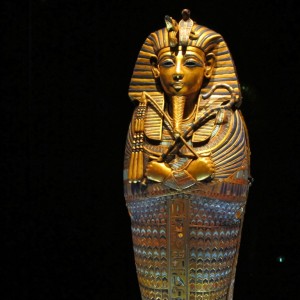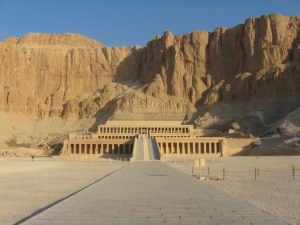“Death Shall Come On Swift Wings To Him Who Disturbs The King.” This is the so-called curse written in hieroglyphics on the entrance to his tomb discovered by Howard Carter and his team of archaeologists.
Many on Carter’s team believed the curse to be real after many suffered illnesses and even death. However, modern day scientists on the other hand aren’t as easily fooled and attribute the “curse” to simply being a manifestation of a mold known as Aspergillus niger (black mold). It is known to cause health issues such as fevers, rashes, and fatigue to people exposed to the airborne spores.
Italian physician, Dr. Nicola Di Paolo, identified another possible fungus, Aspergillus ochraceus, found at Egyptian archaeological sites. He suggested it could have made visitors to King Tut’s tomb, or even those that just handled its artifacts, sick. However, this type of mold has not been shown to be fatal.
We think much like Carter who was skeptical of the curse and who died many years later after first opening the tomb (he died at the age of 64 from natural causes) the curse is bogus.
We do acknowledge there were many coincidental occurrences (ie Carter’s canary was attacked by a cobra) following the discovery and opening of the tomb, however those were really simply just coincidence.
In reality these tombs had many of the right ingredients to produce mold (food items, moisture, darkness, a sealed environment, a deceased human, etc).
So we’re not surprised that mold spores were able to grow and flourish within King Tut’s final resting place and they could have even continued to grow and survive had they not been disturbed by opening the tomb.
Which side are you on…curse or simply just a really bad mold problem?? Comment below, I’d live to hear from you.

